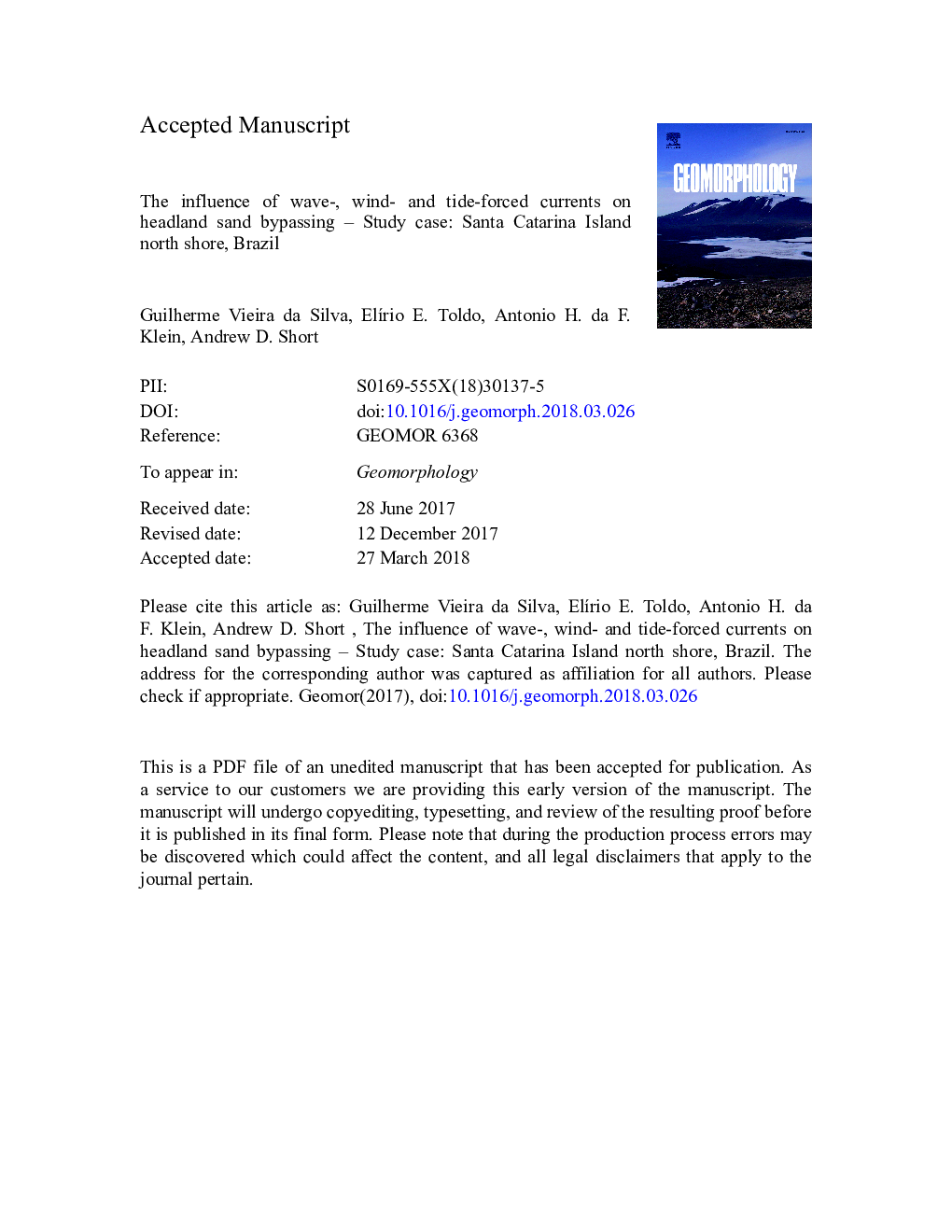| کد مقاله | کد نشریه | سال انتشار | مقاله انگلیسی | نسخه تمام متن |
|---|---|---|---|---|
| 8908008 | 1635338 | 2018 | 37 صفحه PDF | دانلود رایگان |
عنوان انگلیسی مقاله ISI
The influence of wave-, wind- and tide-forced currents on headland sand bypassing - Study case: Santa Catarina Island north shore, Brazil
ترجمه فارسی عنوان
تأثیر جریانهای موج، باد و جریانهای اجتناب ناپذیر در عبور از شن و ماسه سربار - مورد مطالعه: ساحل جزیره سانتا کاتارینا، برزیل
دانلود مقاله + سفارش ترجمه
دانلود مقاله ISI انگلیسی
رایگان برای ایرانیان
کلمات کلیدی
مدل سازی عددی، حمل و نقل رسوب، رانش بی سرنشین، مجبور شدن حمل بار رسوب،
موضوعات مرتبط
مهندسی و علوم پایه
علوم زمین و سیارات
فرآیندهای سطح زمین
چکیده انگلیسی
Investigations of headland sand bypassing are still an under-reported subject in the literature. This paper aims to understand the contribution of currents forced by different mechanisms such as tides, winds (i.e. local wind acting over the ocean surface generating currents, without considering wave generation) and waves (as they approach/break on the coast) to headland sand bypassing. The study was carried out in an area comprising a series of seven headlands with varying wave exposure due to changes in shoreline orientation and increasing tidal influence close to a relatively large bay. This paper uses a calibrated and validated process-based model (Delft3D) to simulate a series of scenarios including spring and neap tides during flood and ebb conditions and a range of wind and wave scenarios that encompass both average and extreme conditions. The results indicate that waves are the main driving force for the headland bypassing as they transport sand at rates two orders of magnitude higher than tide- or wind-driven sediment transport. The tide-driven currents can only transport sediment during spring tides in locations where the currents are intensified. It is also demonstrated that the wave direction plays an important role in sediment transport. In exposed areas with larger headlands a combination of wave directions is required to first transport sediment offshore (out of the beach) and secondly to transport sediment alongshore and back to the next beach. Whereas in areas with little variation in wave direction exposure, the same oblique wave direction is responsible for the entire headland bypassing process. This is the first time the contribution of tide-, winds- and wave-generated sediment transport to headland bypassing have been studied.
ناشر
Database: Elsevier - ScienceDirect (ساینس دایرکت)
Journal: Geomorphology - Volume 312, 1 July 2018, Pages 1-11
Journal: Geomorphology - Volume 312, 1 July 2018, Pages 1-11
نویسندگان
Guilherme Vieira da Silva, ElÃrio E. Toldo Jr., Antonio H. da F. Klein, Andrew D. Short,
